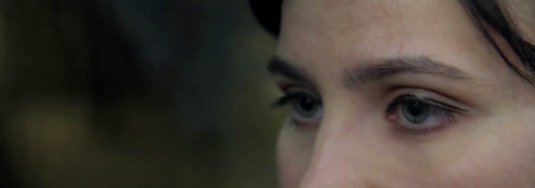
| The reading room |
The screening room |
The listening room |
|
The story Origin of the project Director's notes Cast and credits Biofilmography Festival Awards Press Next screenings Distribution Contacts and credits Download News Home |

The cinematographic gaze: I usually start from an issue I completely fall in love with, and which I feel has a universal validity, but always within a metonymic poetry because I feel more attracted by the personal stories than by the macro-story. The cinema I love is made full of significant details and synaesthetic images able to unveil the persons' interior universe. Images with a synthetic and original strenght. I give one example: when it came to narrate the encounter of a mother and daughter who hadn't met for two and a half years, I felt the frailty of this material and the need to respect it. Instead of an intrusive, spotlight kind of view, which would have been the filming of their initial embrace, I decided to film the overtired awake after their first nights together. The first kind of approach would have been sensational, but within the coldness of depiction, and the crude obviousness of the event itself. The latter contains the moving sweetness of a long desidered everyday life, a habit that has become a luxury good: being able to embrace your little daughter to say “good morning”. With this image I searched for a sensuousness able to transmit an intimate atmosphere indipendently from the gaze: we hear the rustle of the bed sheets, the sweetness of the whispered words, the scent of the yawns, the warmth of the embraces and the physicalness of the tickles. Visual approach: I have well studied the locations before shooting and passed a long time with the protagonists without the camera. This way I could prepare any situation photographically, caring precisely the image composition and preferring the use of the tripod while alternating close and long shots: the research of the more intimate emotions on one side, and the transcription of the multidimensional spaces on the other, describing their socio-anthropologic connotations. Playing with depth of field and focus points becomes an aesthetic ground of the complex and multi-layered world to be narrated. My gaze is discreet and curious at the same time. A fake step back, to let the door frame a scene, gives the audience a sense of spying an interesting moment, while giving also more freedom to the protagonists. Our long time together without the camera has given birth to a confidential relationship full of female complicity. This became very precious during the shooting: thanks to the fact that they were already used to the external presence and that they fully trusted in the project, Nadea, Sveta and the persons around them moved with a unique serenity and instinctiveness even when the camera was on. Also the very small size of the film team, mostly female, has been fundamental to the fruitful collaboration, and seemingly permitted a contemporary closeness to the protagonists and invisibility of the camera. Throughout the whole process of filmmaking I was driven by the determination to search and defend a certain formal rigour, even facing the limits of the documentary shots I had. An arduous ambition, a lost battle from time to time, it was nevertheless necessary to free myself from the great seducer of documentary cinema: the referent's dictatorship. This has led to compromises and renouncements, but also to some fortunate discoveries. Storytelling approach: Instead of working with a classical film-script, I adopted a dynamic scheme designing an open structure of hypothetical narrative arcs for each character, considering also their interior turning points and the eventuality to be redesigned by life's surprises. This procedure sometimes implied to allow certain setbacks of my own expectancies. I worked on two narrative levels: the prevailing first level follows the protagonists' lives in direct observation, just as in a feature film's narrative arc. The slimmer second one is an explicative level: it permits to transport certain informations through the friends' phone or direct talks. The expression of doubts, desires or problems is entrusted to the protagonists' dialogues. Following this dramaturgical means I have excluded any direct interviews, adopted only in the early phase of research. This is a self-imposed limit used as an incitement to create the story adopting a visual imagery, instead of “leaning on” that kind of shots, for how affascinating they might be. Finally, preferring the internal breath of the film to a composed soundtrack, I have decided not to use any non-diegetic music. |